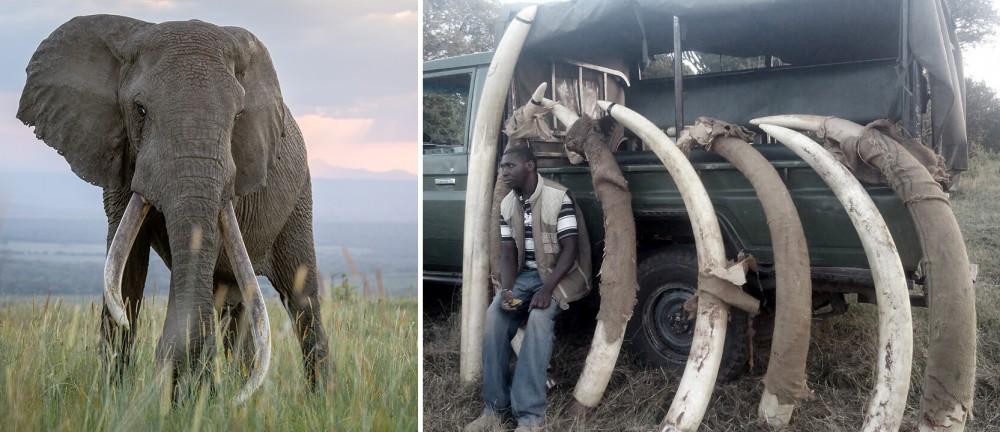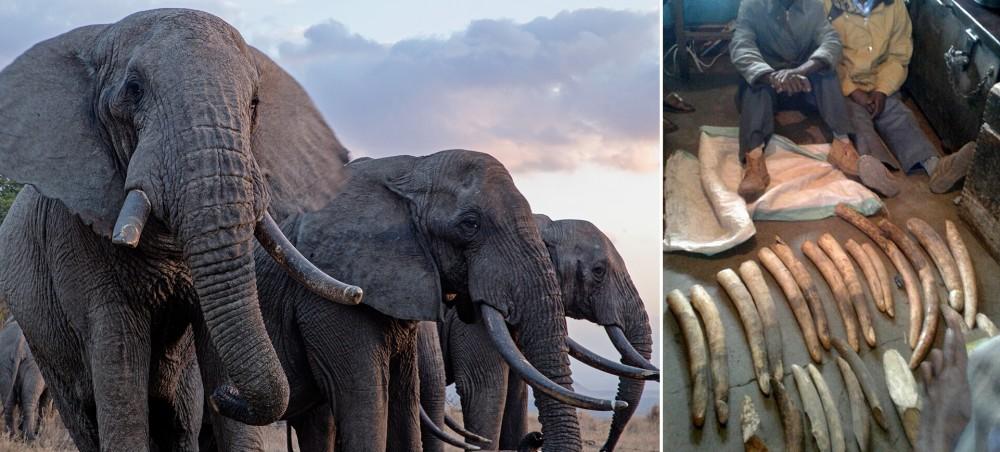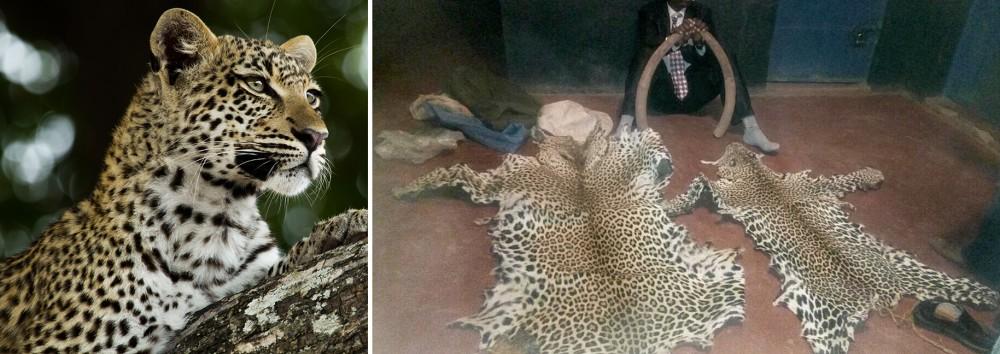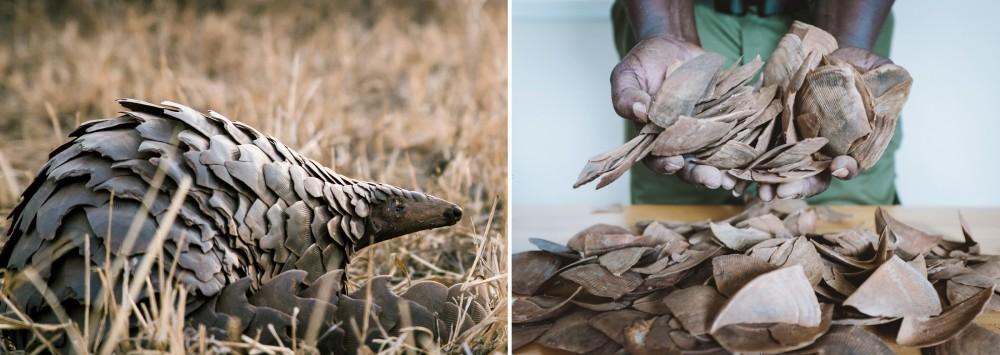WATCH. WAIT. ARREST.
For some, the job stops when an elephant dies.
For others, that’s when it all begins . . .

We still have no idea how many elephants they killed.
The syndicate was operating across a large area of southern Kenya. Other than the poisoned arrowheads in the bodies of the elephants, these were professionals who left little trace. They were only loosely affiliated, but with two things in common: their method of killing, and their ivory dealer.
At first, we thought it was an isolated one-off ivory sale. But further digging revealed a nest of criminals, all in the business of profiting from dead elephants.
Aware of the complexity, Big Life’s intelligence officer backed off. This was going to take time, diligence, and the support of Kenya Wildlife Service (KWS).
So we watched and waited. Poking, prodding, looking for weakness. We knew the poaching gangs were supplying a dealer who was selling to a buyer much higher up the chain. One mistake could bring everything tumbling down. We had to be careful.
Eventually, the opportunity came. Big Life intelligence personnel had been working with KWS to track the buyer as he prepared to complete an ivory deal. KWS made the arrest.
From there, the cards started to topple, as Big Life informants supplied KWS with the information necessary to arrest one gang in an ambush. This was followed a month later by the arrest of a second gang.
It was the culmination of four months of difficult and dangerous work.
But the impact of dismantling an ivory supply chain is incalculable.

When Big Life started our conservation work in the Greater Amboseli ecosystem, we focused on what was in front of us: catching the poachers responsible for dead elephants. We had early success at this, and poached elephant carcasses became increasingly rare in our area of operation.
But our intelligence networks (which were very basic at the time) told us that there was still ivory moving through the ecosystem.
This was not Amboseli ivory. We were watching the beating artery of a supply chain, channeling ivory back and forth across our area of operation. All part of a global network that takes ivory from a dead elephant, onto motorbikes down dusty dirt tracks, to deals made in small-town backstreets, then into vehicles bound for holding facilities in larger cities, before exiting Africa’s international ports, usually in a shipping container destined for the east.
Wildlife trafficking is thought to be the third most lucrative illicit commerce in the world, after drugs and weapons, worth an estimated $10 billion a year, according to the U.S. State Department.
From the moment the ivory leaves the elephant, the race is on. If it gets to port before we intercept it, we’ve lost.
We started small, working with KWS to first dismantle the local trading networks. But each lead took us further from home. Our intelligence department grew in response, following the information outward. With increased reach came increased impact.
In 2013, we confiscated 11.5 kg of ivory in 2 busts.
In 2018, due to expanded reach, KWS and our intelligence officers confiscated about 1,000 kg of ivory in 32 busts.
Over this six-year period, our joint efforts with KWS have resulted in the confiscation of more than 2,000 kg of ivory in undercover operations. Over two tons of this has been recovered in the last two years, with operations often taking place many hundreds of kilometers away from our core operating area of Amboseli.
The rapid increase in the weight recovered does not necessarily represent a greater number of elephant deaths, or amount of ivory moving. It’s simply that our improved efforts are intercepting more of it.
And it’s not just about elephants. We have eyes and ears on the lookout for all wildlife products. Everything from leopard skins to owl eggs to pangolin scales.

Just as important as taking illegal wildlife products out of the supply networks, we are removing the human links that hold the chain together. In the last two years, we have assisted KWS in arresting more than 150 suspects on charges relating to ivory trading.
And knowing that every system has cracks, we don’t stop there.
Big Life employs a Prosecutions Officer who tracks every court case, attending the important ones in person, to ensure that each case is handled according to the law. The Kenyan government has done its bit, drastically increasing sentences and fines for wildlife-related crimes. And the courts are following through.
Back in 2012, penalties were highly variable, and some ivory traders were getting off with as little as a $300 fine. Now, convicted ivory traders are sentenced to up to five years in jail or a fine of up to $50,000.
The price of ivory has dropped dramatically across the board. Where once poachers were getting paid up to $180/kg of ivory, that’s now down to as little as $60/kg. The same has happened on the demand side, with prices of raw wholesale ivory in China having declined from a peak of $2,100/kg in 2014 to $730/kg in 2017.
This is all heading in the right direction. But the incentive to trade clearly remains.
KWS reported that only 80 elephants were poached across Kenya in 2017. The Big-Life-supported ivory confiscations alone in that year could not have come from elephants that were exclusively poached in Kenya.
The majority of ivory we confiscate is coming in from outside the country, as well as from stockpiles of previously poached tusks.
So the job is far from done. Time and again, the ivory trade—and the elephant poaching that feeds it—has gone to sleep, only to awaken years or decades later. This time, we need to end it for good.

Big Life has an entire department dedicated to this work. These are people who you will never see, and we will never name. People risking their own safety to insert themselves in the cogs of the ivory trade, trying to bring it to a grinding halt.
We need funds to keep these undercover teams in the field, chasing ivory and other illegal wildlife products.
Each intelligence operation costs money to run, and the biggest busts can total up to $15,000, taking as long as six months from start to finish.
The budget below shows our annual costs for this work, covering Big Life’s actions from the moment the ivory is cut from an elephant’s body, all the way through to the landing of the judge’s gavel.
|
Undercover field staff
|
$42,000.00
|
|
Incentives and rewards
|
$74,000.00
|
|
Operational costs
|
$50,000.00
|
|
Court case follow-up
|
$18,000.00
|
|
Total Budget
|
$184,000.00
|
In the nine years that Big Life has been operating, we have never made a public appeal for our intelligence operations.
We hope that you will see the extraordinary value of this vitally important work and help keep our teams in the field.
Thank you as always for your support.
Richard Bonham, Craig Millar and Nick Brandt
